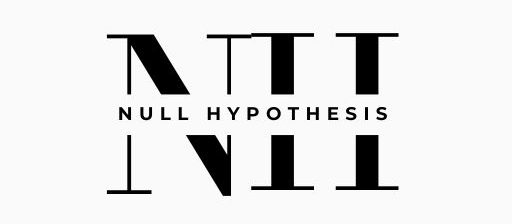Bạn đang xem: A stronger tone to open 2025; mutual funds see outflows
Municipals kicked off 2025 with a stronger tone Thursday as investors began to employ January reinvestment dollars while U.S. Treasuries were choppy and closed the session mixed and equities saw losses.
Investors pulled more money from municipal bond mutual funds in the final reporting week of 2024, but high-yield reverted to inflows to close out the year, adding to the sector’s outperformance overall.
Triple-A yields fell by one to three basis points Thursday, depending on the curve, while USTs were mixed with yields barely changed on the session.
ICE Data Services had the two-year municipal to UST ratio Thursday at 66%, the five-year at 64%, the 10-year at 67% and the 30-year at 79% at 4 p.m.
“December brought a downtrade of 30 basis points that left yields at their highest points of the year,” noted Kim Olsan, senior fixed income portfolio manager at NewSquare Capital. “High grades due in the 10-year area open 2025 trading above 3.00% — not since 2010 has the yield opened the year at a comparable range.”
The final figures for muni returns in December showed total return of -1.46%, pushing overall returns to +1.05% for 2024, per Bloomberg indices.
“This full-year performance outpaced the UST Index (+0.58%) but lagged the U.S. Corporates (+2.13%),” noted Peter DeGroot, managing director and head of J.P. Morgan’s municipal research and strategy team.
“Within the IG Muni Index, riskier sectors like IDR and BBB delivered the strongest performance relative to the duration/return trendline on a full-year basis, while the 10-year Index lagged considerably,” DeGroot noted.
Long duration “took the brunt of the losses in December,” Olsan said, noting the 30s10s MMD slope flattened from a high of 119 basis points to 84 basis points but generic yields ended the year just through 4.00% — and more than 50 basis points off the year’s low yield.
“A long-dated index lost 2.4% last month or double that of the intermediate index loss,” Olsan pointed out. The intermediate range was the weakest range for all of 2024, posting a loss of 0.3% — underperforming short bonds (+2.7%) and long tenors (+1.4%), she said.
Xem thêm : Best gilt mutual funds to invest in December 2024
Bloomberg’s High Yield Municipal Index saw negative returns of -1.66% in December, “yet managed to achieve a full-year return of 6.32%,” DeGroot noted.
“Within the HY Muni Index, the Hospital Index outperformed the duration/return trendline by a wide margin,” DeGroot said.
“High-yield munis fell slightly out of favor late in the year but otherwise were the most consistent category for inflows,” Olsan noted, adding that fund flows in the category were positive in all but five weeks of 2024, with the last two reports in December showing an uptick in outflows and then small inflows for the final reporting week.
“The basis for 2025 performance will be stable economic conditions that don’t threaten revenue streams of related projects in the space,” Olsan noted.
The Taxable Municipal Index (-2.46%) underperformed other taxable fixed-income products (UST -1.54%/ US Corps -1.94%), DeGroot noted.
While taxable munis had “a split result for December vs. the full 2024 return,” Olsan said, “the full year result for taxable munis was a gain of 1.5%, 30 basis points above the Treasury and Aggregate index returns.”
“Looking ahead for what 2025 may bring, the sector could see a sizable increase in supply if UST rates trend lower and improve the economics of advance refundings,” she said.
Fund flows
LSEG Lipper reported investors pulled $386.9 million from the funds for the week ending Jan.1, which
High-yield funds saw inflows of $20.1 million compared to the previous week’s outflows of $413.6 million.
The four-week moving average grew to $521.7 million of outflows from the previous week’s $145.2 million per week of outflows.
“We attribute the reversal in fund flow direction in December primarily to the rise in UST rates and tax trading activities,” DeGroot said. “Indeed, 10-year UST rates climbed from a local low of 4.15% on Dec. 6, rising 25bps by the following week, and culminating in a total increase of 48bps by Dec. 27 (recall, outflows began in the week ending 12/11).
“Consequently, the breadth and depth of losses expanded, enhancing the appeal of tax trading,” DeGroot added.
The Investment Company Institute reported outflows of $1.296 billion for the week ending Dec. 24, following $222 million of outflows for the week ending Dec. 18.
Exchange-traded funds saw inflows of $527 million for the week ending Dec. 24 after outflows of $562 million the week prior, per ICI data.
Tax-exempt municipal money market funds saw inflows of $2.079 billion for the week ending Dec. 31, following $1.477 billion of inflows the previous week, bringing the total assets to $135.249 billion, according to the Money Fund Report, a weekly publication of EPFR.
The average seven-day simple yield for all tax-free and municipal money-market funds rose to 3.19% from 3.08% the week prior.
Taxable money-fund assets saw $31.752 billion added to end the reporting week after $53.782 billion of inflows the week prior.
The average seven-day simple yield for all taxable reporting funds stayed at 4.15%.
AAA scales
MMD’s scale was bumped two to three basis points: The one-year was at 2.83% (-3) and 2.78% (-3) in two years. The five-year was at 2.86% (-2), the 10-year at 3.06% (-2) and the 30-year at 3.89% (-2) at 3 p.m.
The ICE AAA yield curve was bumped two basis points: 2.88% (-2) in 2026 and 2.81% (-2) in 2027. The five-year was at 2.82% (-2), the 10-year was at 3.03% (-2) and the 30-year was at 3.81% (-2) at 4 p.m.
The S&P Global Market Intelligence municipal curve was bumped three basis points: The one-year was at 2.84% (-3) in 2025 and 2.77% (-3) in 2026. The five-year was at 2.83% (-3), the 10-year was at 3.03% (-3) and the 30-year yield was at 3.82% (-3) at 4 p.m.
Bloomberg BVAL was bumped two basis points: 2.93% (-2) in 2025 and 2.78% (-2) in 2026. The five-year at 2.86% (-2), the 10-year at 3.09% (-2) and the 30-year at 3.80% (-2) at 4 p.m.
Treasuries were mixed.
The two-year UST was yielding 4.25% (flat), the three-year was at 4.286% (flat), the five-year at 4.377% (-1), the 10-year at 4.569% (-1), the 20-year at 4.861% (flat) and the 30-year at 4.793% (+1) at the close.
Nguồn: https://nullhypothesis.cfd
Danh mục: News






